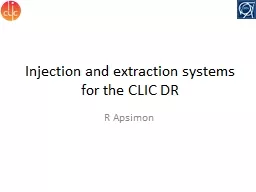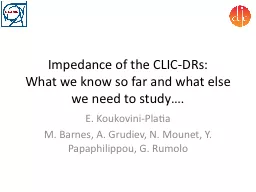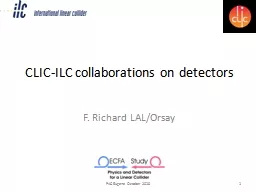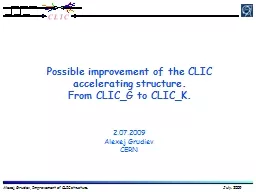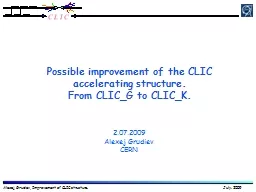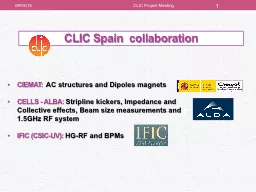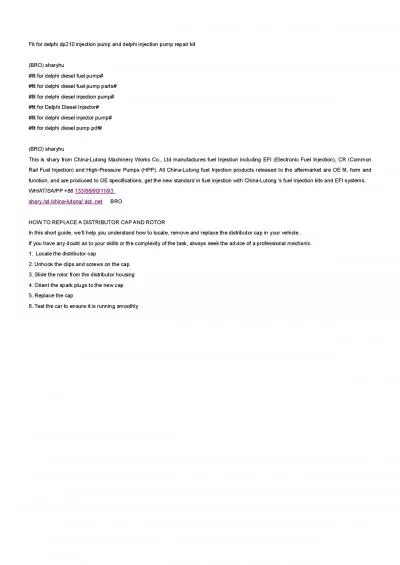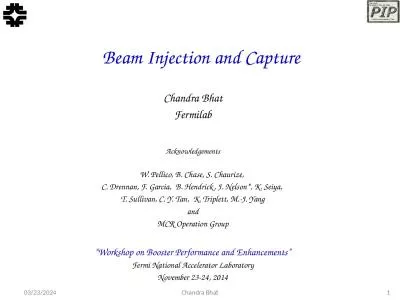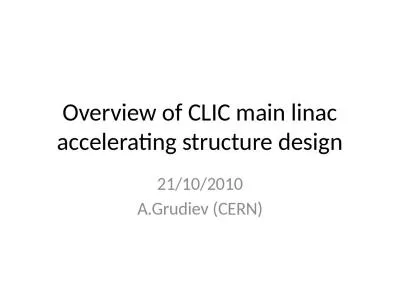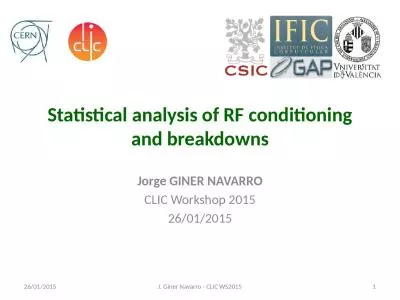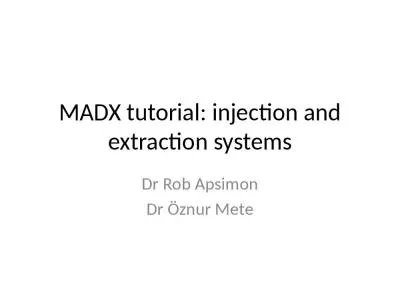PPT-Injection and extraction systems for the CLIC DR
Author : sherrill-nordquist | Published Date : 2017-10-23
R Apsimon Content Cell design and parameterisation Optimisation methods and comparison Constraints and limitations of parameter space Summary of optimised parameters
Presentation Embed Code
Download Presentation
Download Presentation The PPT/PDF document "Injection and extraction systems for the..." is the property of its rightful owner. Permission is granted to download and print the materials on this website for personal, non-commercial use only, and to display it on your personal computer provided you do not modify the materials and that you retain all copyright notices contained in the materials. By downloading content from our website, you accept the terms of this agreement.
Injection and extraction systems for the CLIC DR: Transcript
Download Rules Of Document
"Injection and extraction systems for the CLIC DR"The content belongs to its owner. You may download and print it for personal use, without modification, and keep all copyright notices. By downloading, you agree to these terms.
Related Documents

